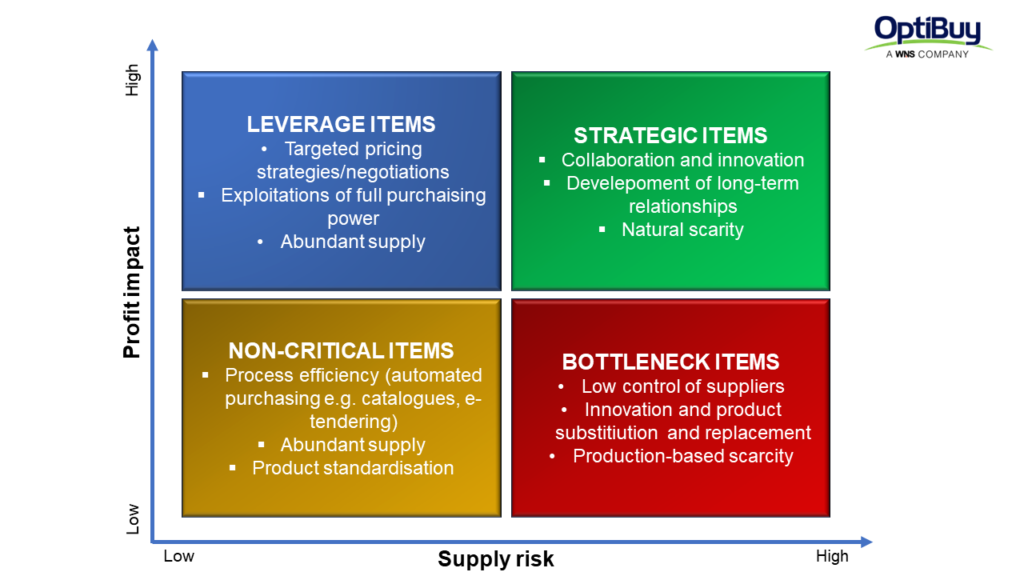How does the matrix divide procurement categories?
The Kraljic Matrix divides procurement categories into four main groups:
- Strategic Items: For these products, we develop partnership relationships with suppliers, enter into long-term contracts, and regularly evaluate and measure their performance to mitigate risks. SRM systems, such as Ivalua, can assist in this process.
- Leverage Items: In this case, we use our procurement capabilities to achieve the best negotiation outcomes.
- Bottleneck Items: We focus on ensuring supply continuity for these products. These items usually have a low value but are crucial for the company’s operations. Therefore, we concentrate on securing supplies rather than negotiating prices.
- Non-Critical Items: In this category, we focus on process automation (P2P). The process of reporting, approving, and fulfilling orders is often more expensive than the purchases themselves, so automating these processes is beneficial.
The Kraljic Matrix is very effective in building strategies for various categories. It provides a global view of all organizational expenditures and groups them, offering “ready-made” solutions for category management.
Why do some companies successfully utilize the Kraljic Matrix while others fail to achieve significant benefits?
What causes the Kraljic Matrix to often not deliver the expected results?
Two main factors influence the effectiveness of the Kraljic Matrix:
- Incorrect categorization in the matrix: Imagine a scenario where over 80% of procurement categories in a company are classified as strategic because almost all products are essential for the company’s proper functioning. This leads to a significant burden on the procurement department, generating additional personnel costs and limiting negotiation capabilities. Good procurement organizations strive to minimize strategic categories by seeking market alternatives and reducing risks.
- Lack of supplier perspective: Procurement is an interaction between the company and the supplier. Even if we categorize our products correctly in the Kraljic Matrix, we need to ask ourselves: “What kind of client are we for our supplier?” Robert Monczka, in his publication “Purchasing and Supply Chain Management,” proposes segmenting clients from the supplier’s perspective into: Key Client, Developmental Client, Exploitable Client, and Non-Essential Client.
Summary:
The Kraljic Matrix is an excellent tool that provides a holistic view of procurement and product/category classification. It forms the basis for building strategies for procurement categories. The Kraljic Matrix will be effective if we remember that procurement involves not just the buyer’s perspective but also the supplier’s, which should be considered when developing category strategies.









